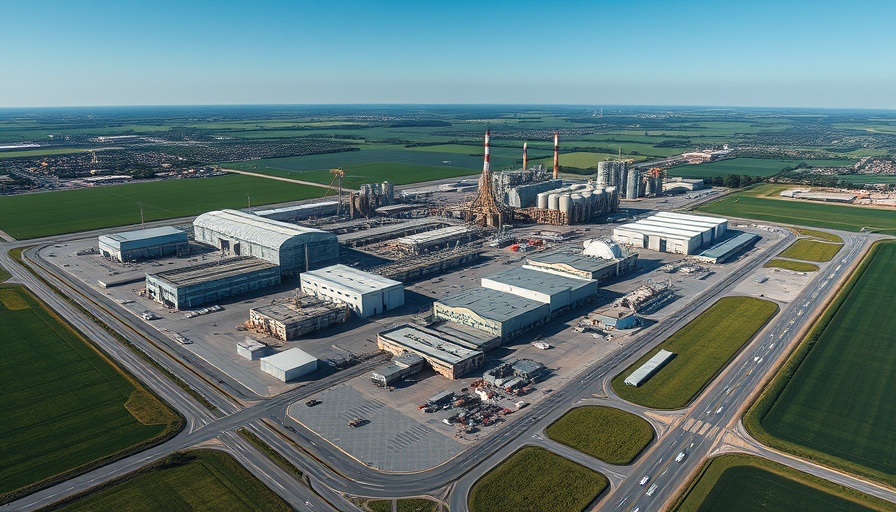
A Major Construction Milestone: LEGO's Virginia Facility
The LEGO Group recently celebrated a significant milestone in construction at its new U.S. manufacturing campus located in Chesterfield County, Virginia. On October 1, 2025, the company hoisted the final steel beam into place, marking a key moment as they move toward launching operations, currently scheduled for 2027. This modern facility, covering over 1.7 million square feet, represents the company’s largest investment in the Americas, totaling over $1.5 billion. Designed with sustainability at its core, the plant aims for carbon-neutral operations, aligning perfectly with LEGO's long-term commitment to reduce its environmental footprint.
Building for the Future: Sustainability at the Forefront
In a world increasingly focused on sustainability, LEGO's Virginia plant is poised to set a new standard. The facility will incorporate high-tech production equipment that guarantees each LEGO brick is produced to an astounding precision of 1/10th of a hair's width, ensuring compatibility with bricks manufactured over the last six decades. Furthermore, it aligns with the company’s goal of achieving net-zero greenhouse gas emissions by 2050. The plant's design includes solar panels and a rainwater recycling system, maximizing efficiency and minimizing ecological impact.
The Impact of Investment on Local Communities
This endeavor is not just about manufacturing—it's also about community development. LEGO is on track to create over 1,700 jobs over the next decade, contributing significantly to local employment and economy. Moreover, the company is committed to revitalizing local parks by planting 17 species of native trees, further enhancing the environmental benefits of this massive construction project. Their long-standing relationship with local organizations will also provide learning-through-play initiatives benefiting hundreds of thousands of children in the Greater Richmond area.
Tech-Driven Construction: The Role of Automation and Innovation
David Lee, an expert in integrating technology into construction, points out that such investments in automation are pivotal for the future of manufacturing. The deployment of advanced construction methods and design innovations allows LEGO to streamline processes, ultimately optimizing project efficiency and cost management. By combining state-of-the-art technology with sustainable materials, LEGO is setting a precedent that could inspire other companies to follow suit, ensuring that the industry keeps pace with modern demands.
What’s Next? The Future of LEGO Manufacturing
As we look ahead, the implications of LEGO's Virginia plant extend beyond just brick production. This ambitious project is poised to reshape how future manufacturing facilities will operate in terms of sustainability and community engagement. Additionally, with plans for a regional distribution center to complement the factory, LEGO is strategically positioning itself to meet growing consumer demand across North America. This visionary approach is a testament to LEGO's commitment to innovation and quality, ensuring that it remains at the forefront of the toy industry.
 Add Row
Add Row  Add
Add 




Write A Comment